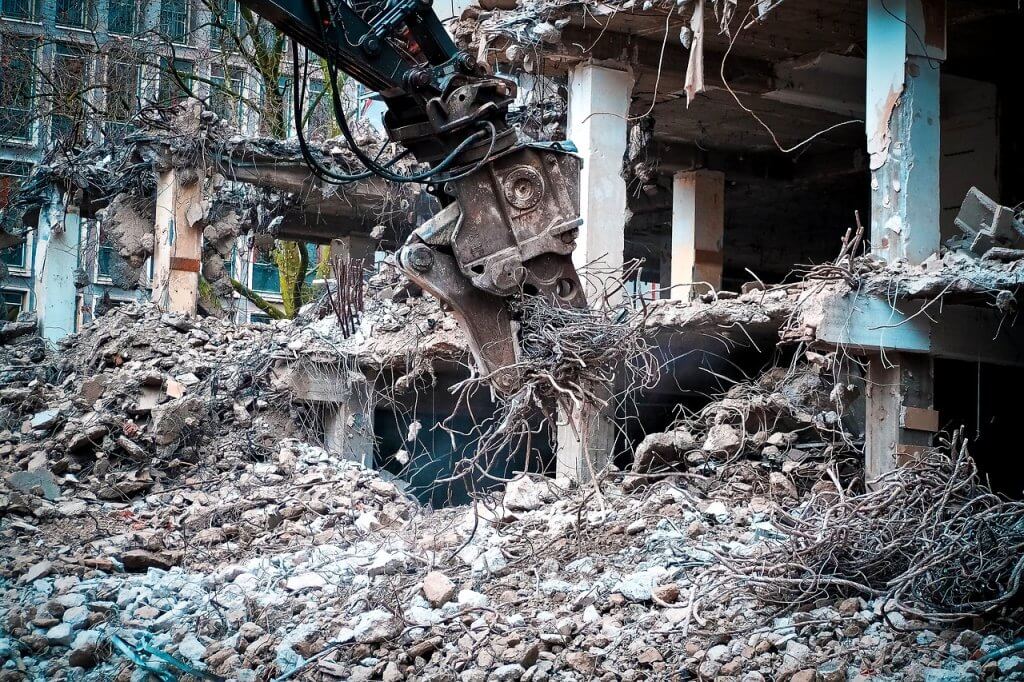While leveling walls with a wrecking ball is simple, taking down large structures like abandoned skyscrapers or cooling towers requires special skills in engineering, chemistry, and artistry. Controlled demolition or implosion works similarly. Here’s how it works:
Planning
Demolition is an intricate process that requires extensive preparation to ensure it proceeds in an orderly, safe, and cost-efficient manner. When planning demolition operations, it’s essential to keep in mind all elements involved such as worker safety, the surrounding community, and environmental impact.
Demolition requires breaking a building down gradually for maximum control and stability; most structures cannot be dismantled entirely in one day using explosives or bulldozers; using controlled demolition has become so prevalent within the construction industry due to this factor.
As part of any controlled demolition, the initial step should be preparing the site by clearing away debris, clearing away temporary fencing or signs, and removing temporary fences/signs that may be present on it. After clearing away, any flammable materials such as asbestos minerals, radioactive elements, or radioactive sources should also be identified and removed prior to demolition beginning – this includes checking for asbestos minerals, radioactive elements, or any flammable substances present within structures.
After an inspection has been completed, it is crucial to devise a demolition plan. This must include an outline of how and when you intend to dismantle the structure and include measures taken to protect surrounding neighborhoods from noise and dust emissions.
Full-time safety oversight for any demolition project is critical in order to reduce incidents on-site and prevent accidents from taking place. Furthermore, full-time safety oversight can help improve team communication and enable more streamlined demolition processes – some advantages of which include conducting regular risk assessments, hosting toolbox talks, and offering one-on-one consultations for employees.
Conducting daily inspections at a demolition site is crucial to ensure all personnel is following all safety protocols and procedures, but using digital checklists and forms makes this process much simpler and more efficient for everyone involved. These forms allow inspections to be conducted quickly while providing real-time feedback to all stakeholders involved as well as immediately addressing and resolving any issues as soon as they arise.
As part of any demolition project, it is vital to plan for its future. Doing this will not only facilitate more streamlined demolition processes in the future but will also give building owners a sense of when their structure has reached the end of its useful lifespan and needs to be demolished.
Premobilization
While more conventional demolition techniques such as explosives or bulldozers produce considerable dust and debris, controlled demolition allows us to work safely while creating minimal disturbance to surrounding buildings and areas. Our method involves carefully dismantling structures in timed phases until all debris has been cleared up efficiently.
Premobilization refers to the preparation phase that precedes any controlled demolition project. Here, companies identify structures to be demolished, acquire the necessary permits, and ensure compliance with federal and state safety regulations for that structure. It’s also when teams begin identifying any preexisting deficiencies within its construction that need addressing or correction.
Reaching out to the surrounding community and informing all participants on what will occur during demolition is also key in premobilization, as is meeting directly with nearby property owners to explain the process and answer any queries they might have about their demolition. While this step requires time and energy, its importance cannot be overstated in maintaining project integrity.
Demolition

Building or demolishing large structures like buildings and bridges requires more than explosives to bring down. Instead, skilled professionals need to know exactly what’s supporting it before breaking it apart piecemeal – all while minimizing environmental damage with dust pollution from debris removal or bulldozing methods. Controlled demolition offers much better options than traditional methods like using bulldozers.
Before any construction or demolition begins, a team of experts will carefully inspect the structure to assess its condition and what needs to be done to bring it down. This may involve the removal of hazardous materials or reinforcing certain areas. They’ll also investigate for signs of oil contamination or radioactive material which need to be addressed as soon as possible.
Once inspections are complete, a detailed plan on how to bring down the structure will be formulated. Depending on its size and composition, this may involve breaking it down gradually for greater control and stability of future use of its remains. It’s also essential that consideration be given as to its impact on surrounding buildings and roads as part of this process.
Implosion is the preferred controlled demolition technique, consisting of multiple explosions that cause the gradual collapse of structures. It can be used on anything from tall buildings and bridges to cooling towers and even cooling tower bridges – and is truly breathtaking to watch.
Water jet demolition is another controlled demolition method, employing high-pressure water nozzles to cut through concrete structures. This approach is particularly useful in tight spaces where other methods cannot be used, such as underground service tunnels or flyovers, while still offering precise and clean cutting of reinforced concrete structures.
Implosion, water jet, or other methods must be done quickly and safely to bring down structures in an effective and timely fashion.
Partner with a contractor with extensive experience handling these kinds of projects to help guide the entire process to an enjoyable outcome. Take some time researching each potential contractor. Online reviews from previous clients for insight into quality assurance as well as a commitment to safety measures.
If you live in Australia, collaborate with Brisbane’s top-rated demolition company, an experienced contractor adept at handling such projects, to ensure a seamless and satisfying outcome throughout the entire process.




